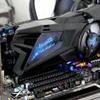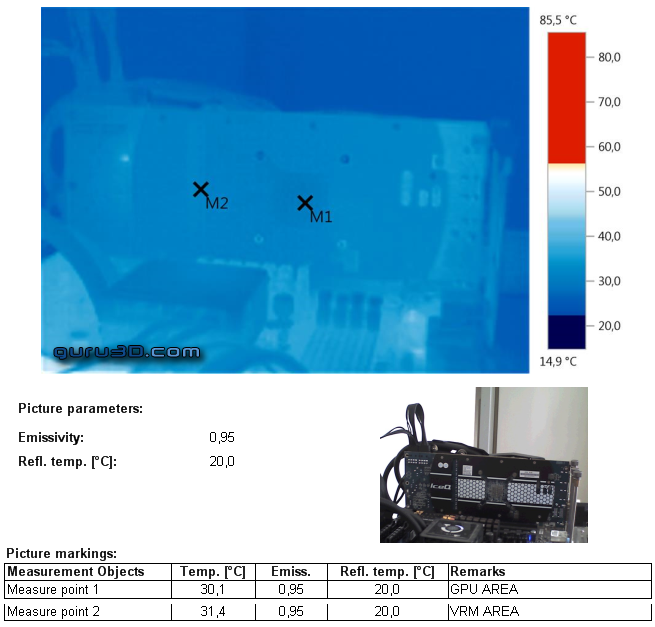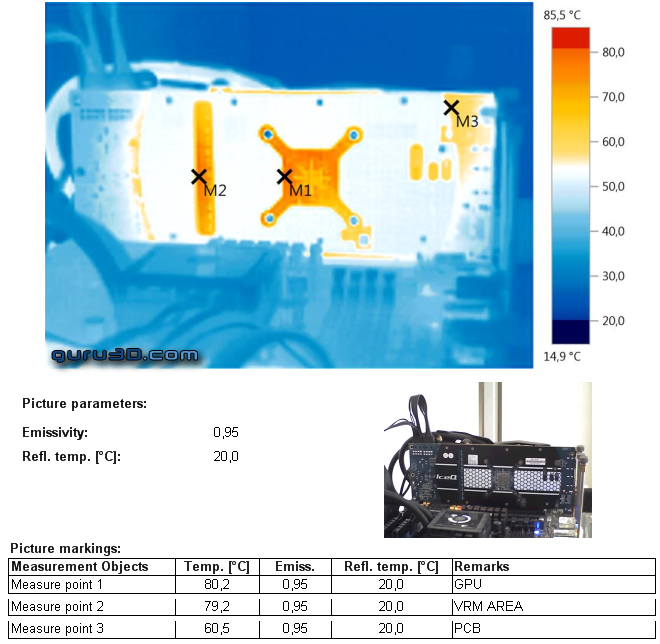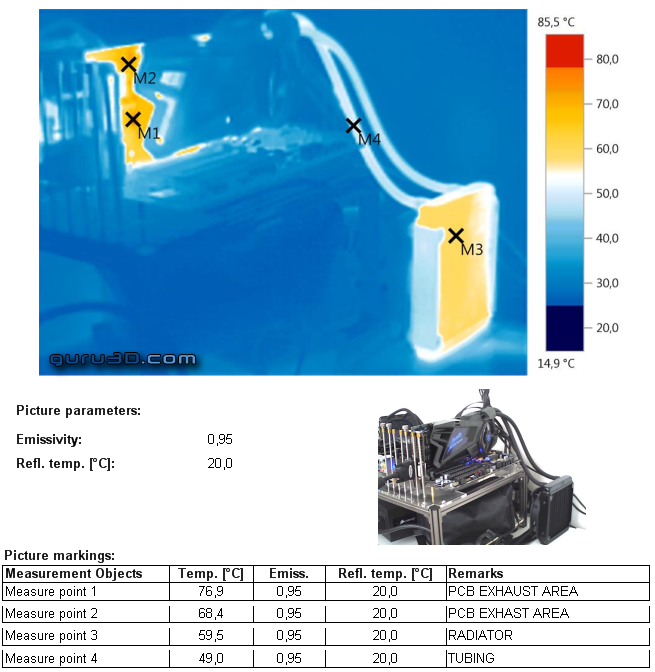Graphics card Thermal Imaging Temperature measurements
Thermal Imaging Temperature measurements
A new addition towards our reviews will be the inclusion of Forward Looking Infra Red thermal images of hardware. Over the past years we have been trying to figure out what the best possible way is to measure temperatures on hardware. Multiple options are available but the best thing to do is to visualize heat coming from the product or component being tested. The downside of thermal imaging hardware is simple, FLIR camera's with a bit of decent resolution costs up-to 10.000 EUR. Hence we passed on it for a long time.
With a thermal imaging camera a special lens focuses the infrared light emitted by all of the objects in view. This focused light is scanned by a phased array of infrared-detector elements. The detector elements create a very detailed temperature pattern called a thermogram. It only takes about one-thirtieth of a second for the detector array to obtain the temperature information to make the thermogram. This information is obtained from several thousand points in the field of view of the detector array. The thermogram created by the detector elements is translated into electric impulses. The impulses are sent to a signal-processing unit, a circuit board with a dedicated chip that translates the information from the elements into data for the display. The signal-processing unit sends the information to the display, where it appears as various colors depending on the intensity of the infrared emission. The combination of all the impulses from all of the elements creates the image.
Above you can see the graphics card in IDLE conditions. We position our measure point in the GPU die area at the backside of the PCB.
Once we start to stress the GPU the thermals quickly change. Now we can measure thermals into the 10th of a degree precise. You'll notice that the VRM zone slightly left at the M2 position is running almost 80 degrees C, which is really good. The GPU area shows roughly 80 Degrees C as well, which is on par with the reported values from the GPU heat sensor.
When we position the thermal camera outwards we can see that despite what we all say and think about the cooler, it is exhausting some warm air inside the PC though not much. The most important point is the actual radiator exhaust. The overall scan shows efficient cooling. Though admittedly, that 120mm raditor is nearly maxed out as so much heat is exhausted.




